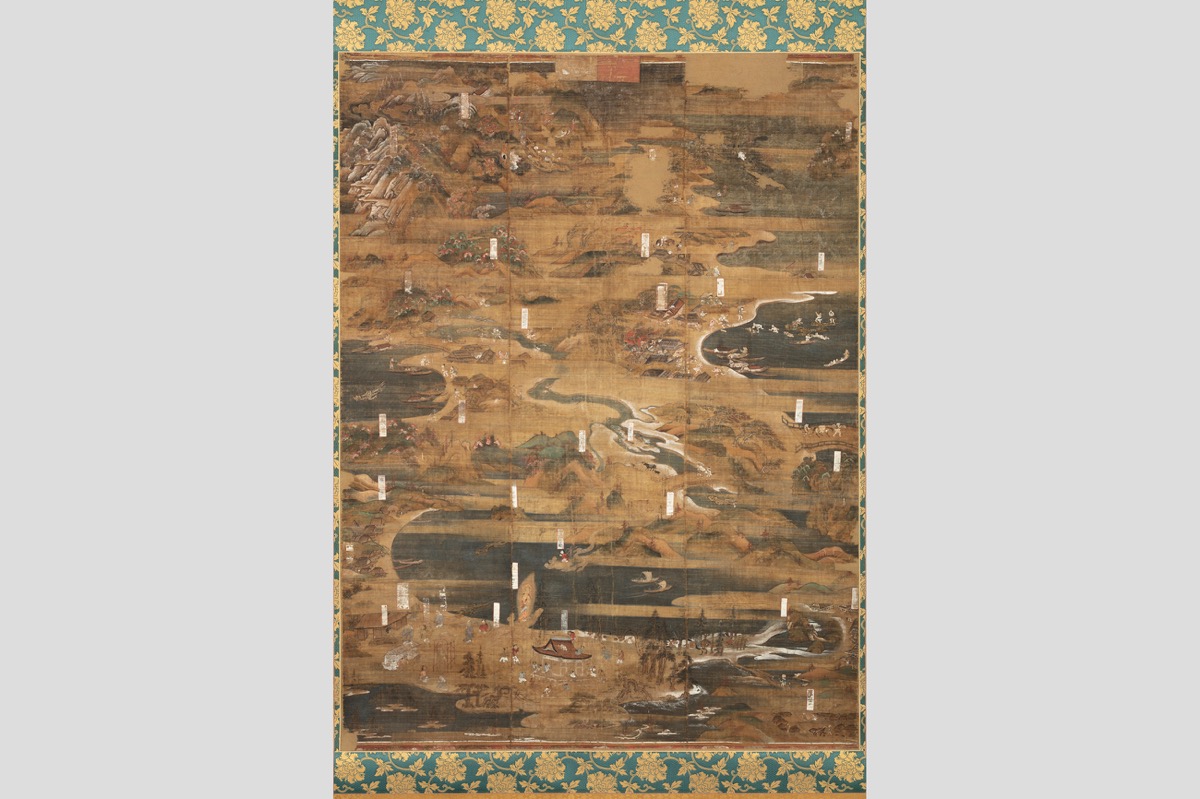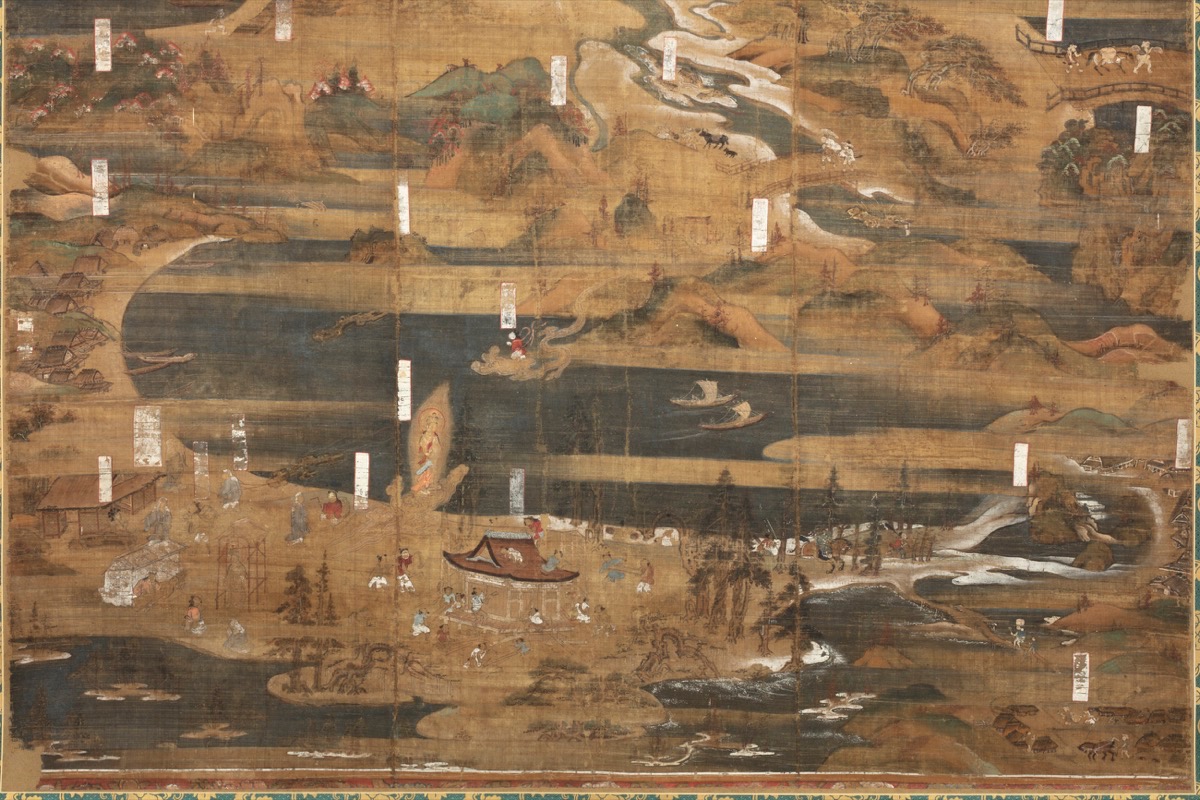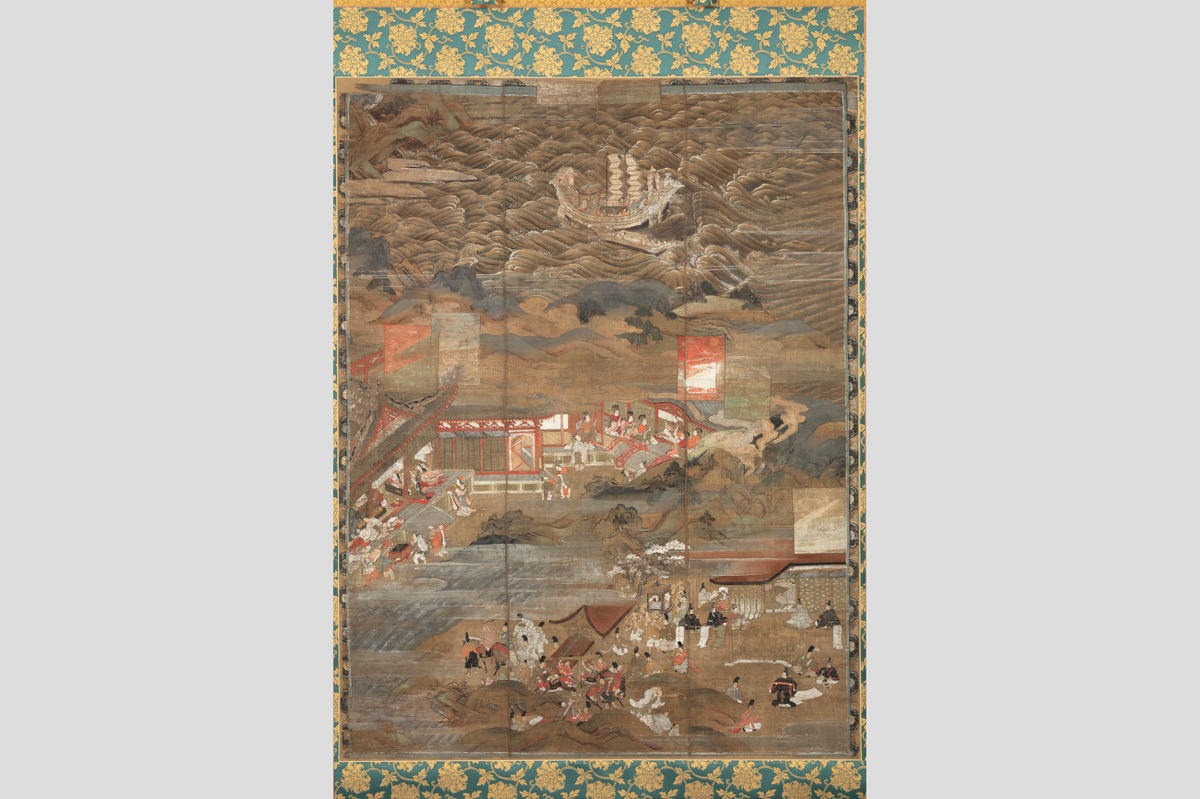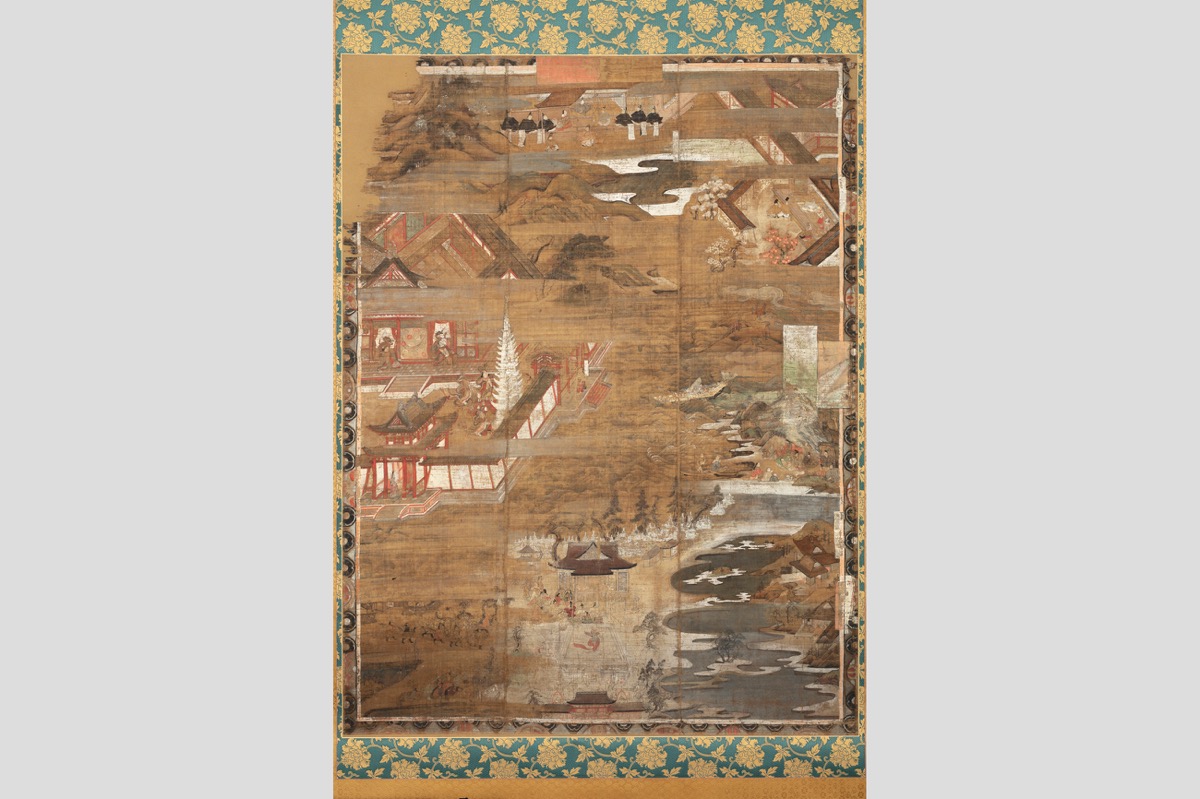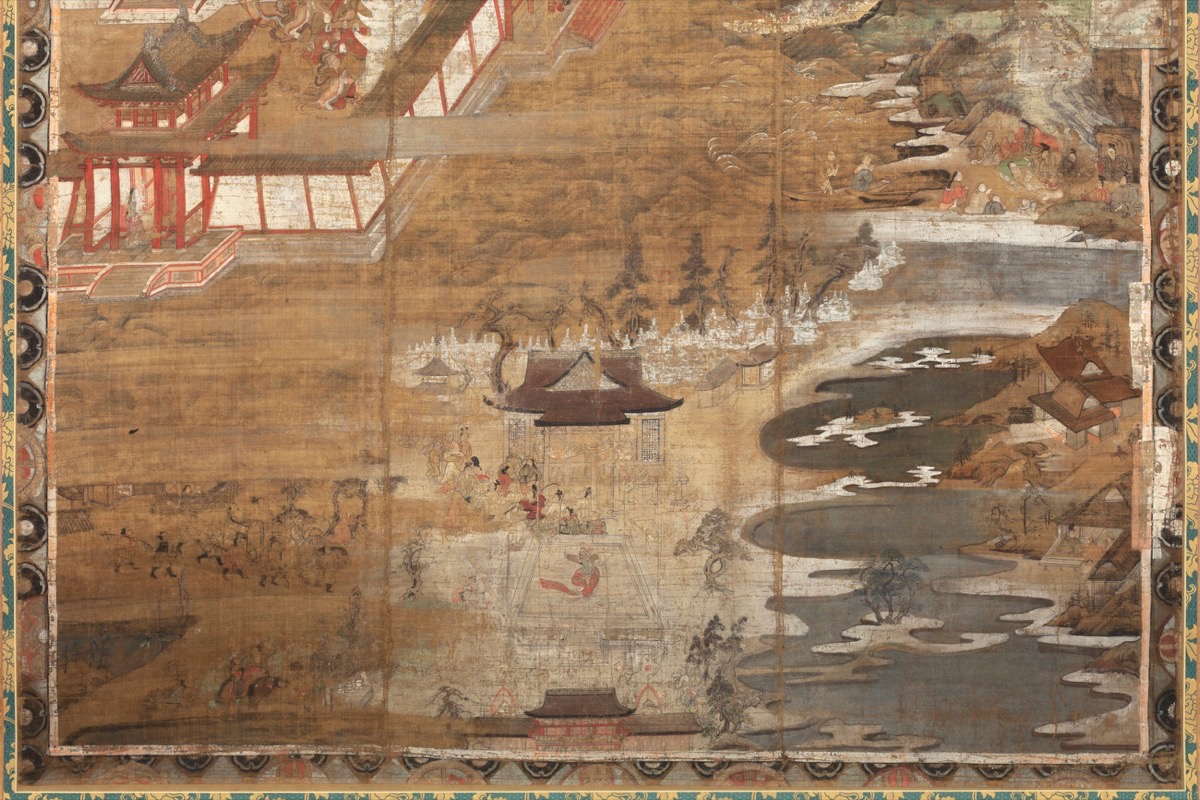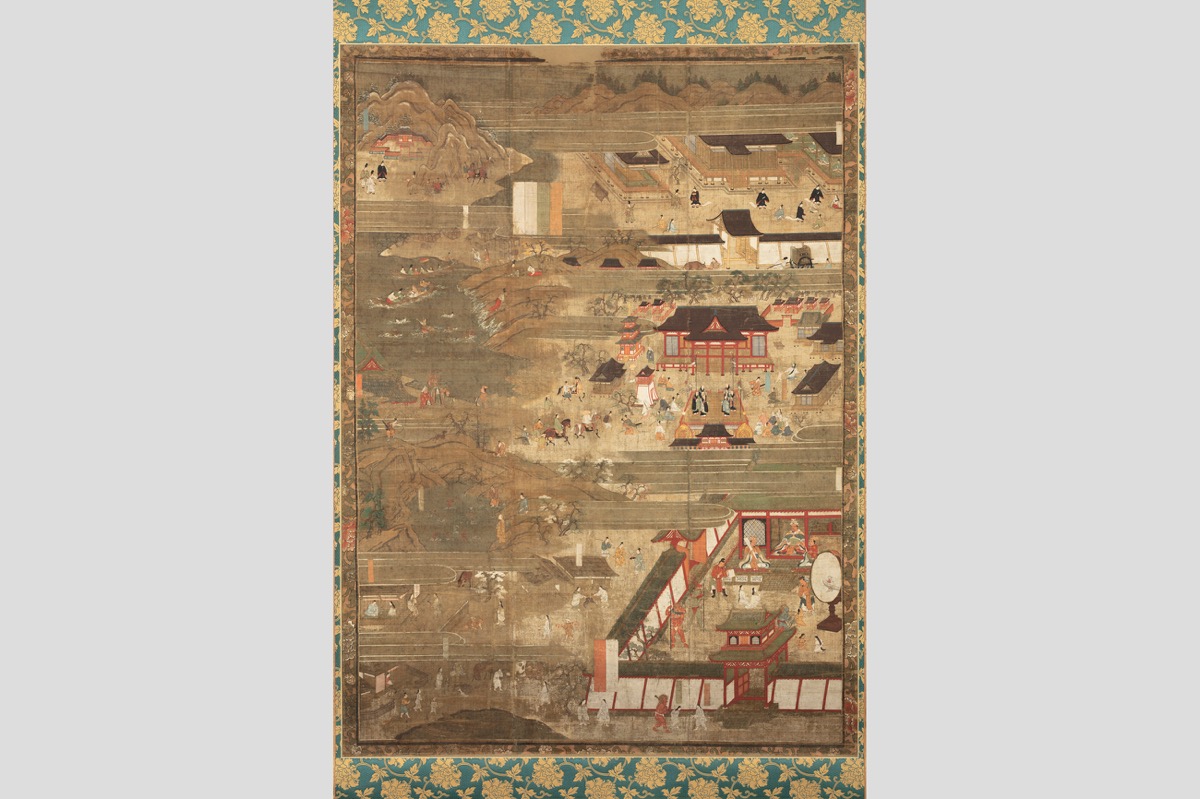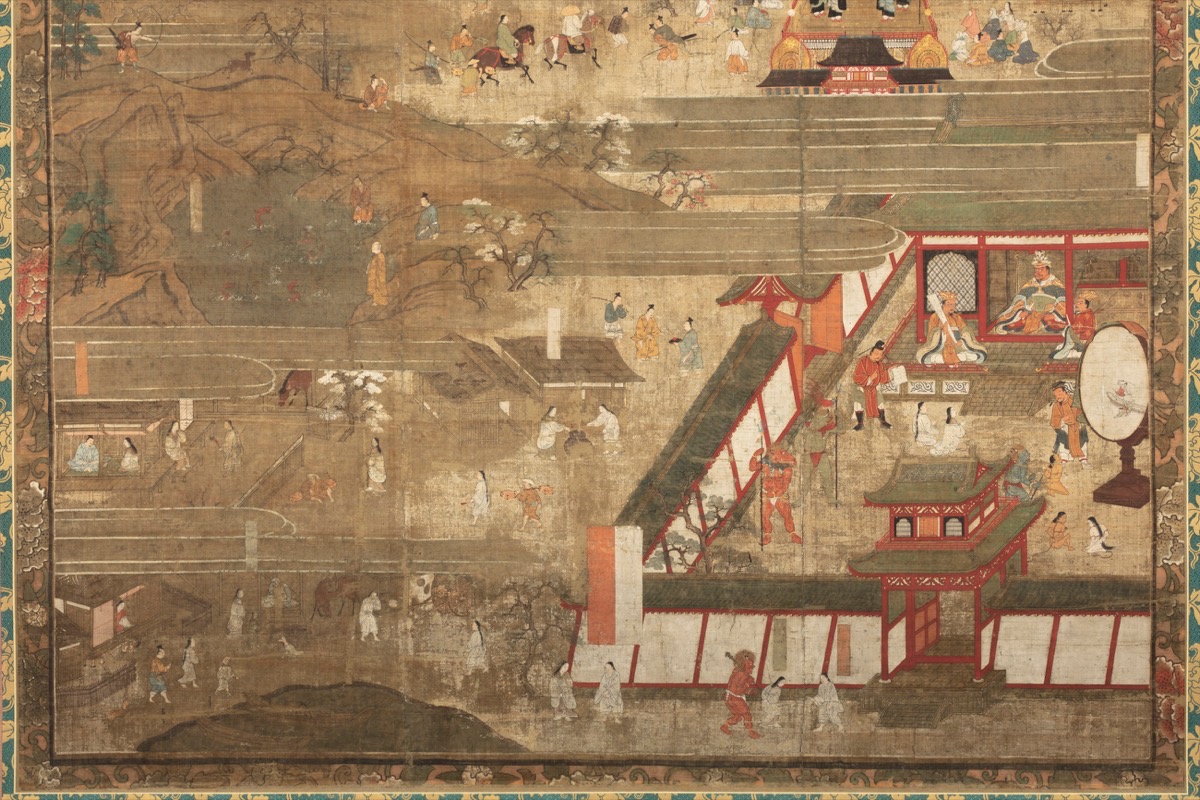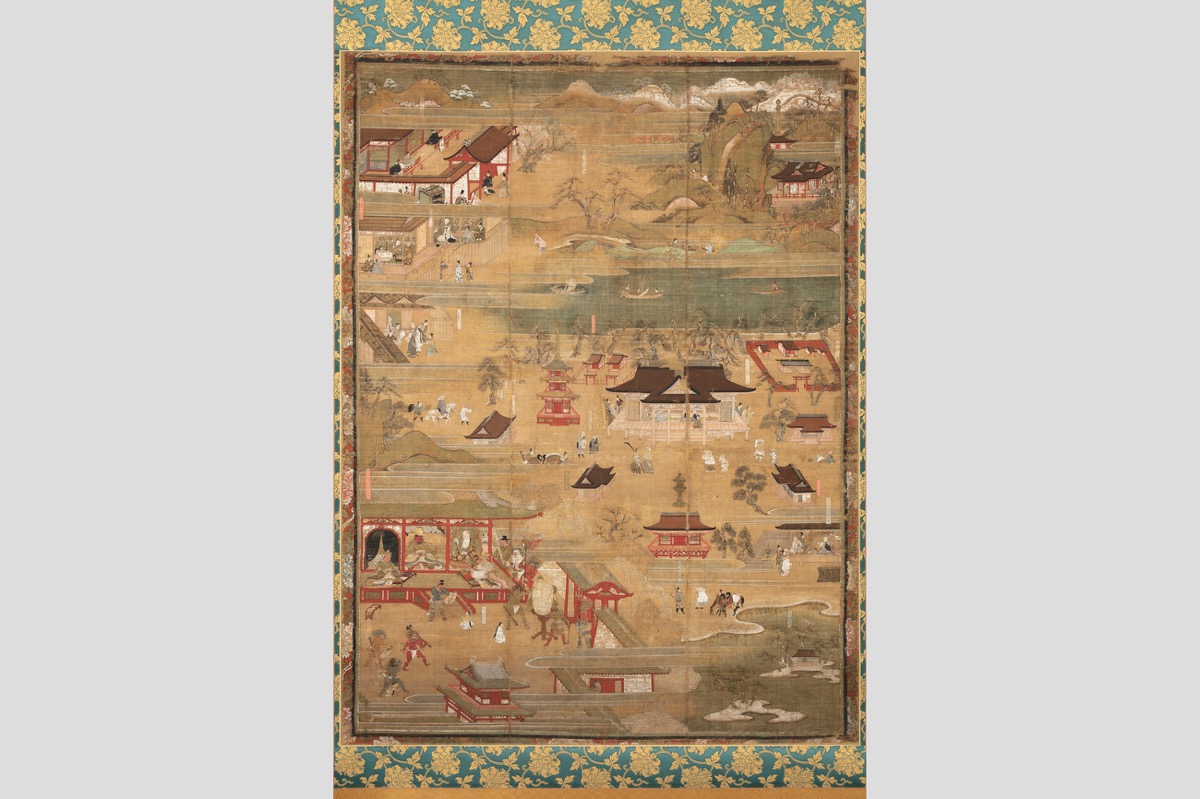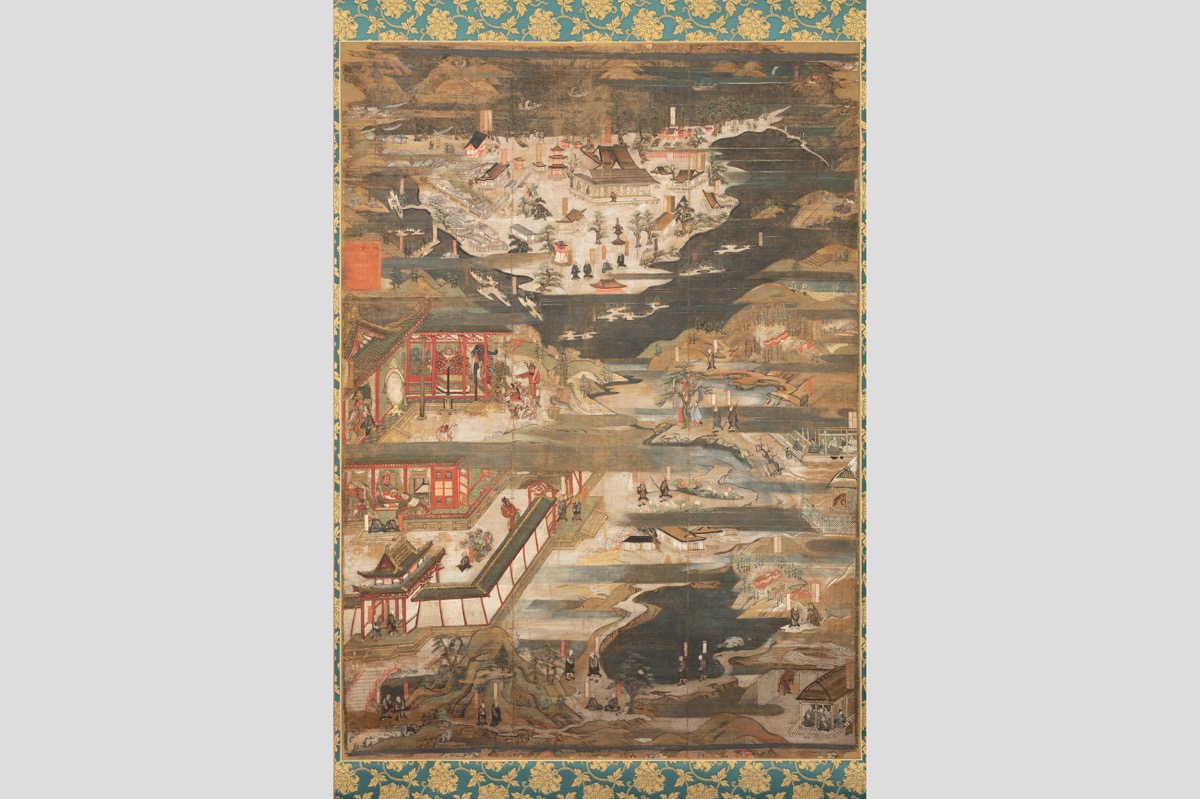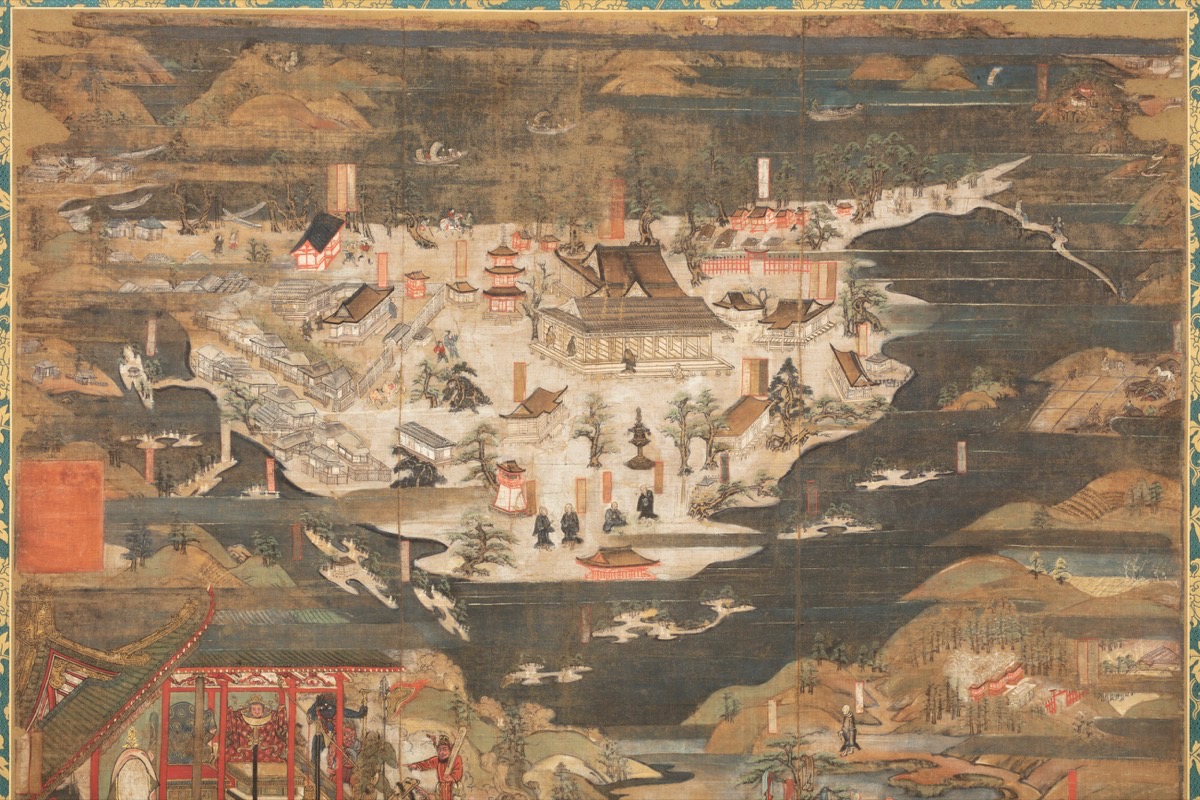Kenponchakushoku Shidoji EngiOrigins of Shidoji Temple (color on silk, 6 scrolls); accompanied by Texts on the Origins of Shidoji Temple (ink on paper, 9 volumes)
| District | Arts and Crafts | Period | ー |
|---|---|---|---|
| Set Content/Set Date | Important Cultural Property(Painting)・西暦1901.03.27 | ||
| Owner | Shidoji Temple | Location | 1102 Shido, Sanuki, Kagawa |
Created as a hanging scroll, this painting depicts multiple stories including the foundation of Shidoji Temple near Shido Bay in eastern Kagawa Prefecture, the construction of the temple's Eleven-Faced Kannon statue (the main image of worship), and the history of temple restorations. There were apparently seven scrolls, but only six remain to this day. The contents of this painting can be understood through reading of the accompanying texts.
Each scroll of this large painting contains a sentence of the story, with the story of each scene structured to follow the passage of time. It is believed that the scroll was used as a pictorial, an easy way to explain the history of the Shidoji Temple. It is also believed that the paintings were not all created at the same time, but rather progressively under a system of patronage at Shidoji Temple during the first half of the 14th century. The Legend of the Jewel Thief, made famous by the Noh song "Ama", is depicted in the Sanshu Shido Dojo Engi on the second and third scrolls. With depictions of Shinjujima Island, salt pans, Manno-ike Reservoir, and other landscapes of Sanuki (currently Kagawa Prefecture) that serve as the backdrop to the stories of these scrolls, these illustrations of the origins of this ancient Kagawa temple are extremely valuable.
Between 2015 and 2017, all six scrolls were disassembled and restored with the assistance of national, prefectural, and municipal governments as a part of cultural asset preservation and restoration.

